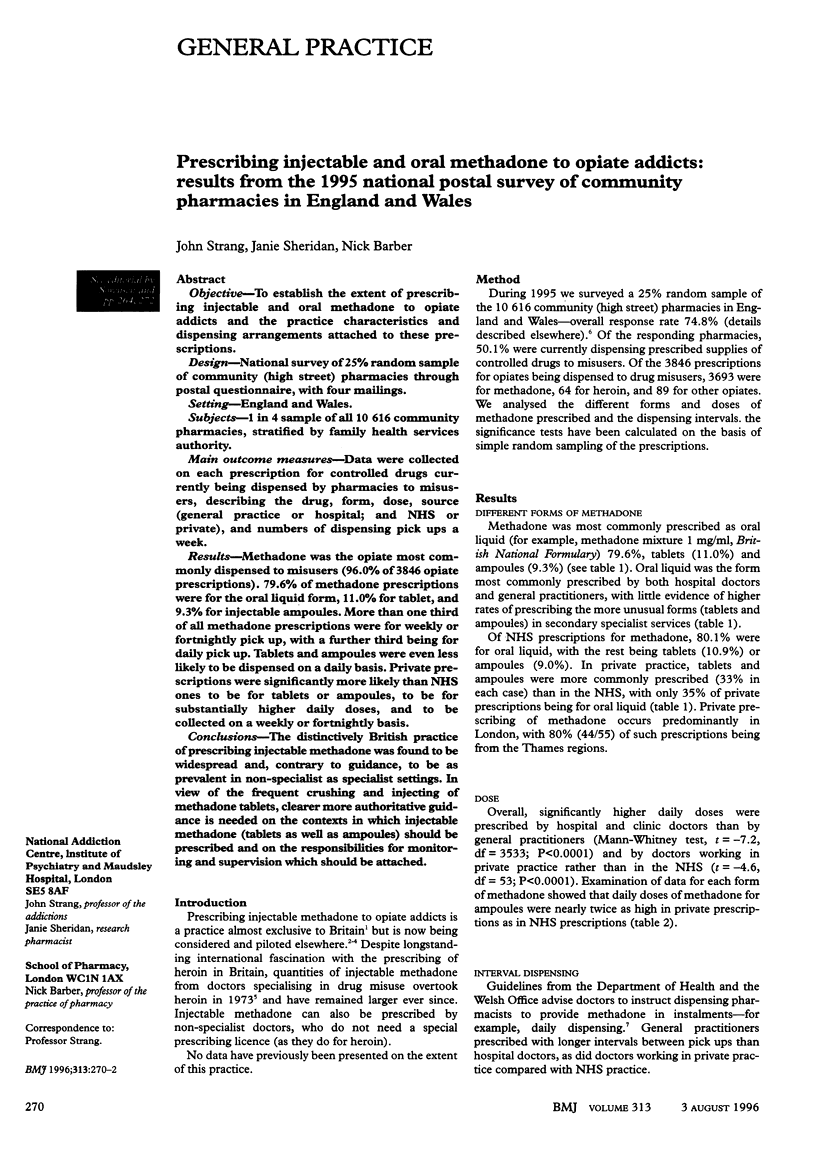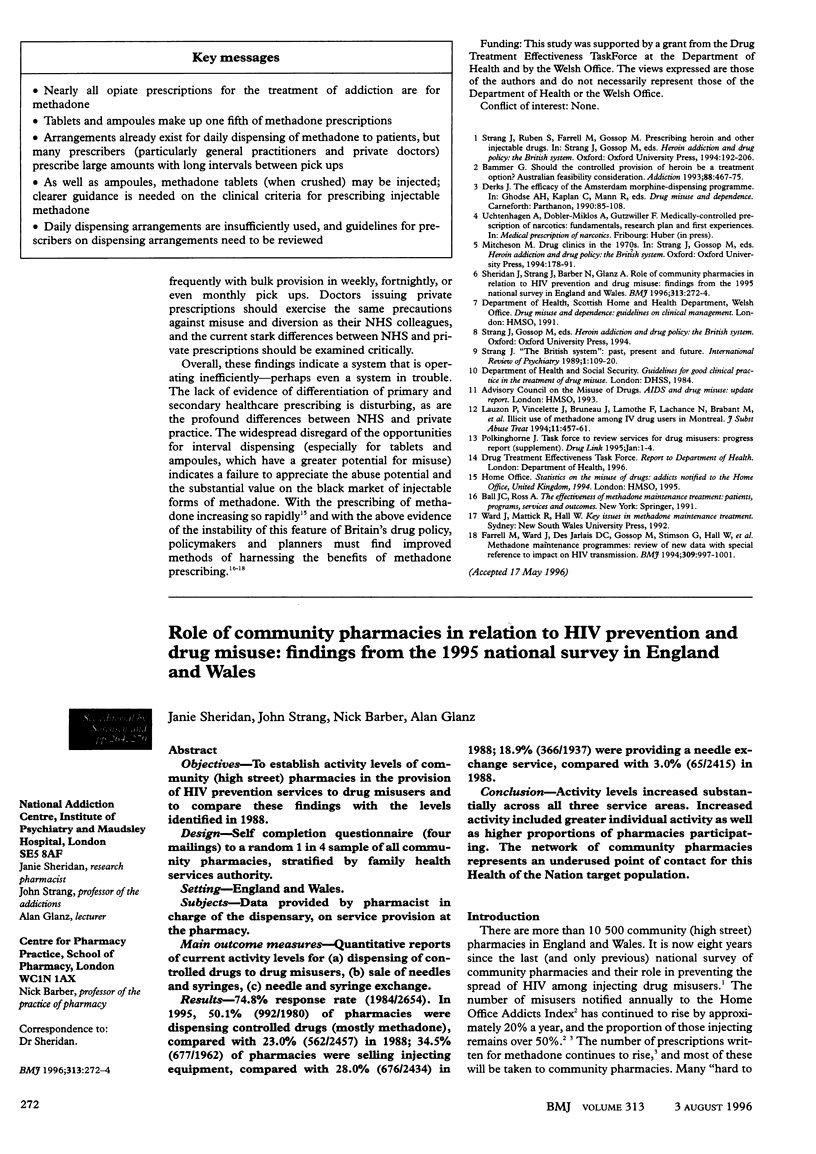Abstract
OBJECTIVE--To establish the extent of prescribing injectable and oral methadone to opiate addicts and the practice characteristics and dispensing arrangements attached to these prescriptions. DESIGN--National survey of 25% random sample of community (high street) pharmacies through postal questionnaire, with four mailings. SETTING--England and Wales. SUBJECTS--1 in 4 sample of all 10,616 community pharmacies, stratified by family health services authority. MAIN OUTCOME MEASURES--Data were collected on each prescription for controlled drugs currently being dispensed by pharmacies to misusers, describing the drug, form, dose, source (general practice or hospital; and NHS or private), and numbers of dispensing pick ups a week. RESULTS--Methadone was the opiate most commonly dispensed to misusers (96.0% of 3846 opiate prescriptions). 79.6% of methadone prescriptions were for the oral liquid form, 11.0% for tablet, and 9.3% for injectable ampoules. More than one third of all methadone prescriptions were for weekly or fortnightly pick up, with a further third being for daily pick up. Tablets and ampoules were even less likely to be dispensed on a daily basis. Private prescriptions were significantly more likely than NHS ones to be for tablets or ampoules, to be for substantially higher daily doses, and to be collected on a weekly or fortnightly basis. CONCLUSIONS--The distinctively British practice of prescribing injectable methadone was found to be widespread and, contrary to guidance, to be as prevalent in non-specialist as specialist settings. In view of the frequent crushing and injecting of methadone tablets, clearer more authoritative guidance is needed on the contexts in which injectable methadone (tablets as well as ampoules) should be prescribed and on the responsibilities for monitoring and supervision which should be attached.
Full text
PDF


Selected References
These references are in PubMed. This may not be the complete list of references from this article.
- Bammer G. Should the controlled provision of heroin be a treatment option? Australian feasibility considerations. Addiction. 1993 Apr;88(4):467–475. doi: 10.1111/j.1360-0443.1993.tb02053.x. [DOI] [PubMed] [Google Scholar]
- Farrell M., Ward J., Mattick R., Hall W., Stimson G. V., des Jarlais D., Gossop M., Strang J. Methadone maintenance treatment in opiate dependence: a review. BMJ. 1994 Oct 15;309(6960):997–1001. doi: 10.1136/bmj.309.6960.997. [DOI] [PMC free article] [PubMed] [Google Scholar]
- Lauzon P., Vincelette J., Bruneau J., Lamothe F., Lachance N., Brabant M., Soto J. Illicit use of methadone among i.v. drug users in Montreal. J Subst Abuse Treat. 1994 Sep-Oct;11(5):457–461. doi: 10.1016/0740-5472(94)90099-x. [DOI] [PubMed] [Google Scholar]
- Sheridan J., Strang J., Barber N., Glanz A. Role of community pharmacies in relation to HIV prevention and drug misuse: findings from the 1995 national survey in England and Wales. BMJ. 1996 Aug 3;313(7052):272–274. doi: 10.1136/bmj.313.7052.272. [DOI] [PMC free article] [PubMed] [Google Scholar]


